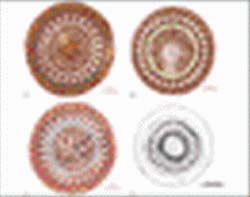
The peritrichs,
peritrich ciliates, are a large and distinctive group of ciliates, which are protozoans characterized by cilia and two kinds of nuclei, macronucleus and micronucleus. Traditionally, they have been subdivided into the Orders Sessilida and Mobilida according to morphological characters. Recent molecular studies by a research group at the CAS Institute of Hydrobiology (IHB) will help people to gain insight into the evolutionary relationship of the groups. Their work entitled "Reevaluation of the phylogenetic relationship between mobiline and sessiline peritrichs (Ciliophora, Oligohymenophora) based on sequences of 18S small subunit rRNA genes" was reported in Journal of
Eukaryotic Microbiology, a key US journal in the field.
In order to understand the evolutionary relationships within peritrichs, GONG Yingchun, a doctoral student at the Laboratory of Taxonomy and Ecology of Protozoa, IHB, used the complete small subunit rRNA (SSU rRNA) sequences of four mobilid species (
Trichodina nobilis, Trichodina heterodentata, Trichodina reticulata, and
Trichodinella myakkae) to construct a phylogenetic tree. Under the guidance of YU Yuhe a protozoologist at IHB, Gong carried out studies by using maximum parsimony, neighbor joining and Bayesian analyses. It turned out that, whatever phylogenetic method was used, the peritrichs did not constitute a monophyletic group: mobilid and sessilid species did not cluster together. Similarity in morphology but difference in molecular data led the researchers to suggest that the oral structures of peritrichs are the result of evolutionary convergence.
Experts say the new discovery will lead to in-depth explorations on the taxonomic position of sessiline on the phylogenetic tree.





